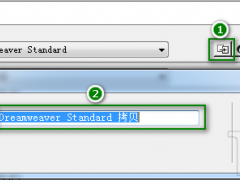这篇文章主要介绍了ruby元编程之创建自己的动态方法,本文讲解使用method_missing和respond_to?创建自己的动态方法,需要的朋友可以参考下
method_missing是Ruby元编程(metaprogramming)常用的手法。基本思想是通过实现调用不存在的方法,以便进行回调。典型的例子是:ActiveRecord的动态查找(dynamic finder)。例如:我们有email属性那么就可以调用User.find_by_email('joe@example.com'),虽然, ActiveRecord::base并没有一个叫做find_by_email的方法。
respond_to? 并不如method_missing出名,常用在当需要确认一个回馈对象需要确认,以便不会因为没有反馈对象,而导致后面的调用出现错误。
下面是一个应用这两者的例子:
示例
我们有类Legislator class,现在,想要给它加一个find_by_first_name('John')的动态调用。实现find(:first_name => 'John')的功能。
代码如下:
class Legislator
#假设这是一个真实的实现
def find(conditions = {})
end
#在本身定义毕竟这是他的方法
def self.method_missing(method_sym, *arguments, &block)
# the first argument is a Symbol, so you need to_s it if you want to pattern match
if method_sym.to_s =~ /^find_by_(.*)$/
find($1.to_sym => arguments.first)
else
super
end
end
end
那么这个时候调用
代码如下:
Legislator.respond_to?(:find_by_first_name)
将会提示错误,那么继续
代码如下:
class Legislator
# 省略
# It's important to know Object defines respond_to to take two parameters: the method to check, and whether to include private methods
# http://www.ruby-doc.org/core/classes/Object.html#M000333
def self.respond_to?(method_sym, include_private = false)
if method_sym.to_s =~ /^find_by_(.*)$/
true
else
super
end
end
end
正如代码注释所述respond_to?需要两个参数,如果,你没有提供将会产生ArgumentError。
相关反射 DRY
如果我们注意到了这里有重复的代码。我们可以参考ActiveRecord的实现封装在ActiveRecord::DynamicFinderMatch,以便避免在method_missing和respond_to?中重复。
代码如下:
class LegislatorDynamicFinderMatch
attr_accessor :attribute
def initialize(method_sym)
if method_sym.to_s =~ /^find_by_(.*)$/
@attribute = $1.to_sym
end
end
def match?
@attribute != nil
end
end
class Legislator
def self.method_missing(method_sym, *arguments, &block)
match = LegislatorDynamicFinderMatch.new(method_sym)
if match.match?
find(match.attribute => arguments.first)
else
super
end
end
def self.respond_to?(method_sym, include_private = false)
if LegislatorDynamicFinderMatch.new(method_sym).match?
true
else
super
end
end
end
缓存 method_missing
重复多次的method_missing可以考虑缓存。
另外一个我们可以向ActiveRecord 学习的是,当定义method_missing的时候,发送 now-defined方法。如下:
代码如下:
class Legislator
def self.method_missing(method_sym, *arguments, &block)
match = LegislatorDynamicFinderMatch.new(method_sym)
if match.match?
define_dynamic_finder(method_sym, match.attribute)
send(method_sym, arguments.first)
else
super
end
end
protected
def self.define_dynamic_finder(finder, attribute)
class_eval <<-RUBY
def self.#{finder}(#{attribute}) # def self.find_by_first_name(first_name)
find(:#{attribute} => #{attribute}) # find(:first_name => first_name)
end # end
RUBY
end
end
测试
测试部分如下:
代码如下:
describe LegislatorDynamicFinderMatch do
describe 'find_by_first_name' do
before do
@match = LegislatorDynamicFinderMatch.new(:find_by_first_name)
end
it 'should have attribute :first_name' do
@match.attribute.should == :first_name
end
it 'should be a match' do
@match.should be_a_match
end
end
describe 'zomg' do
before do
@match = LegislatorDynamicFinderMatch(:zomg)
end
it 'should have nil attribute' do
@match.attribute.should be_nil
end
it 'should not be a match' do
@match.should_not be_a_match
end
end
end
下面是 RSpec 例子:
代码如下:
describe Legislator, 'dynamic find_by_first_name' do
it 'should call find(:first_name => first_name)' do
Legislator.should_receive(:find).with(:first_name => 'John')
Legislator.find_by_first_name('John')
end
end















